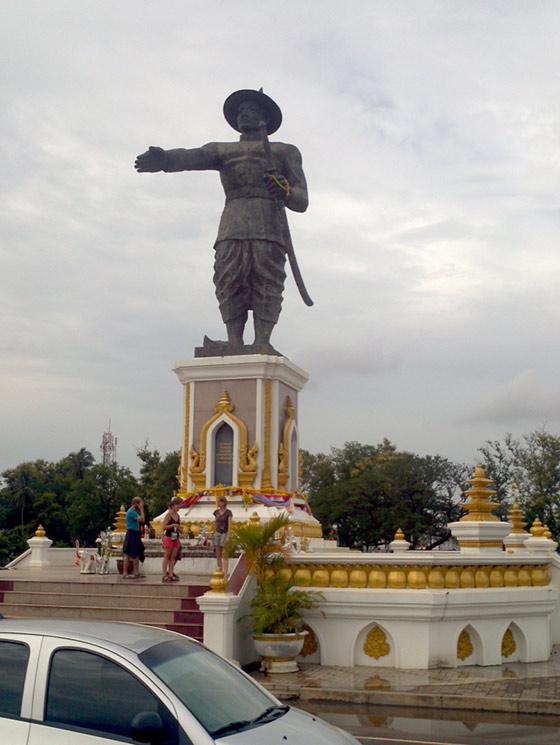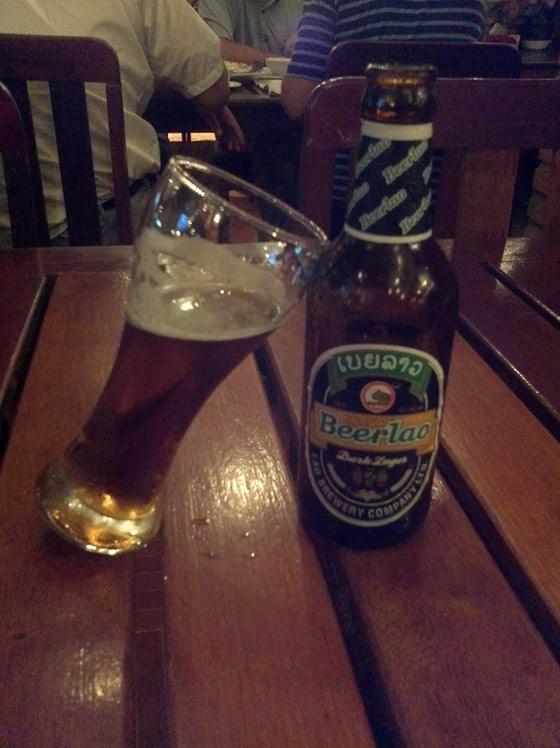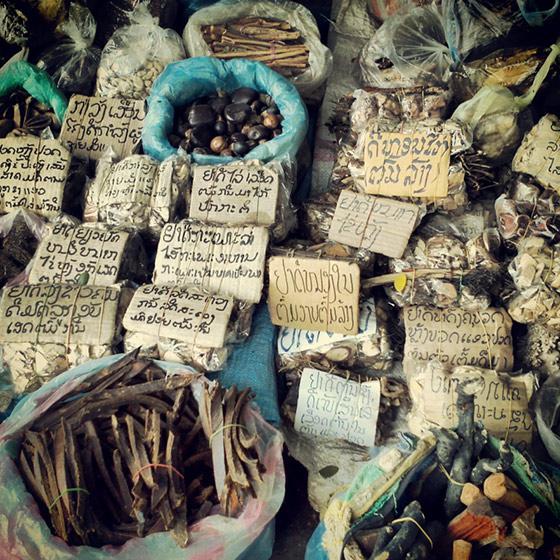In line with our process of being on the ground in the countries we invest in, AFC's Contributing Writer, John Enos, travelled to Laos in August to cover the country's development from the ground.
Perhaps the best indicator that you have arrived in a frontier market still overlooked by investors is that the taxi drivers waiting around the airport arrivals hall seem to be surprised that you are interested in their services. At Vientiane's tiny Wattay International Airport, which receives only a handful of international flights a day from Bangkok, Hanoi, Seoul, Kuala Lumpur, and Kunming, I probably could have picked up my backpack and walked or bicycled into town. It was drizzling lightly and I didn't know exactly where I was going, so I followed the taxi driver, who still seemed incredulous that he already had one customer before lunchtime!
Laos' official name is the Lao People's Democratic Republic, otherwise known as Lao PDR. The joke among travelers and expats is that Lao PDR actually stands for Lao, Please Don't Rush. This becomes clear to any newcomer almost immediately upon arriving in Laos, whether it is by air at Vientiane's small airport or by bus over the Thai/Lao Friendship Bridge connecting Udon Thani in northern Thailand with Vientiane. Coming from the big city hustle and bustle of Bangkok or the chaotic traffic of Ho Chi Minh City or Phnom Penh, Vientiane seems like a capital city that is still awakening from a deep afternoon nap.
The main thoroughfare in downtown Vientiane is lined with haute cafes, tour agencies, and high-end gift shops, but despite the increasing number of luxury SUVs backed up on the street, the main road still only has one lane of traffic in each direction and can easily be crossed on foot, with no stoplight. In the late 19th century, the territories of Luang Prabang and Vientiane were added to French Indochina, and the Gallic influence in Laos can still be felt to this day, from the abundance of quaint Parisian cafes serving fresh croissants to various French names one comes across, such as the national electricity corporation, Electricite du Laos.
Although Vientiane is small, walkable, and roughly mapped in a grid-like fashion, I found myself continuously getting lost on foot. I blame a combination of my lack of a background in French and the fact that Lao names are nearly impossible to pronounce and can be spelled a multitude of ways. Several times a day I'd find myself chasing down an unsuspecting Laotian to ask if he could direct me to Rue Setthathilath or Rue Nokeakoummane or how far it was to the intersection of Quai Fa Ngum and Rue Chanthakhoumane? Now imagine asking for these directions while dripping sweat in the 34 degree Celsius Laotian heat and you can quickly understand my frustration at having learned no words of French, Lao, or Vietnamese in school.
In many ways, Vientiane is quite similar to Phnom Penh, the larger capital of Laos' southern neighbor, Cambodia. Both cities are adjacent to a river, and the promenade along the riverbanks is a gathering spot in both Vientiane and Phnom Penh for old men to drink, young children to frolic, and middle-aged women to do sunset calisthenics en masse. Strolling along the banks of the Mekong River in Vientiane, one soon reaches the massive statue of Chao Anouvong. Anouvong was the last monarch of the Lao Kingdom of Vientiane who is a famed hero in Laos for leading the Laotian Rebellion in the 1820s against the Siamese to gain complete independence from Thailand.
 Anouvong, Leader of the Lao Rebellion
Anouvong, Leader of the Lao Rebellion
In Laos, of course, the drink of choice is inevitably Beerlao, the fabled lager that has a reputation so prominent that the company's marketing director and head of international sales once told a reporter in an interview that when he visited international beverage distributors, even in Asia, many of them had heard of his beer but had not heard of his country! It is unclear when Beerlao's immense popularity took off, but seasoned expats and gap-year backpackers helped to create a customer base for the lager that stretched far beyond the quiet streets of Luang Prabang or the bacchanalian banks of the Nam Song River in Vang Vieng, long a mecca for hard-partying travelers looking to discover the hedonistic side of the country.
Beerlao is brewed by the Lao Brewery Company, which was nationalized in 1975 when the Lao PDR was officially established, and in the early 2000's, Danish brewing giant Carlsberg and its Thai partner each acquired a 25% stake in the company. Although the beer was originally based on locally-grown jasmine rice, Beerlao has since rolled out a number of new products, including Beerlao Dark and Beerlao Gold.
A bottle of the extraordinary lager goes for about 10,000 Kip in Vientiane, roughly USD 1.25, and it is easy to see why the locals are so proud of their national tipple and why the company enjoys a market share of 99% of the beer sold domestically.
 Enjoying the legendary Beerlao Dark Lager for a bit over a dollar a bottle
Enjoying the legendary Beerlao Dark Lager for a bit over a dollar a bottle
Apart from the plethora of farangs (Lao word for foreigner) and visa runners that I saw swigging Beerlao, one other thing I noticed in Vientiane was the abundance of Japanese businessmen, which I certainly did not recall seeing when I had previously visited the city two years prior. I counted upwards of 10 Japanese restaurants in the tiny capital, many of which had menus in Japanese, with pretty Lao staff courting customers on the sidewalk with catch phrases in Japanese, all of which were lost on me. As discussed in the country report on Laos also in this newsletter, Japan is increasingly focusing on peripheral Southeast Asian countries as part of its geopolitical strategy to counter China's influence in the region, and Japanese businesses seem to be welcoming this effort by expanding production facilities in Laos due to the country's close proximity to Thailand, which is a long-standing trade partner of Japan, and Laos' low labor costs.
But despite the recent increase in foreign businessmen and the usual backpackers and Thai visa runners, Vientiane remains a pleasant, quiet town still very much connected to the traditional Lao way of life. Buddhism is the main religion in Laos and has shaped much of the culture, but animist traditions and belief in traditional spirits is still an integral part of Laos' national psyche and one can sense the deep impact that both Buddhism and Animism have had on Laos through the country's food, culture, and even clothing. One of the most interesting and unusual moments of my trip was when I was walking next to one of Vientiane's few recently-opened shopping malls and stumbled upon a woman sitting on the sidewalk hawking herbs, roots, and all sorts of other unusual leaves and bits of bark. A young Lao bypasser seemed interested in my curiosity, and after a short conversation with the old woman selling the goods, he explained that the wares were all key ingredients for various traditional medicines. According to one study, over 70% of Lao households still use traditional medicine! I found this scene quite enthralling on my last day in Vientiane, and the sight of an old woman peddling medicinal ingredients speaks volumes of Laos' continued close connection to the country's traditional culture and beliefs.
 A variety of roots, herbs, leaves, and bits of bark being hawked
A variety of roots, herbs, leaves, and bits of bark being hawked
on a Vientiane sidewalk for use in traditional Lao medicine
I hope that even with the rise of Beerlao's fame or the country's attractiveness to foreign companies, the unique cultural heritage of Laos remains intact!